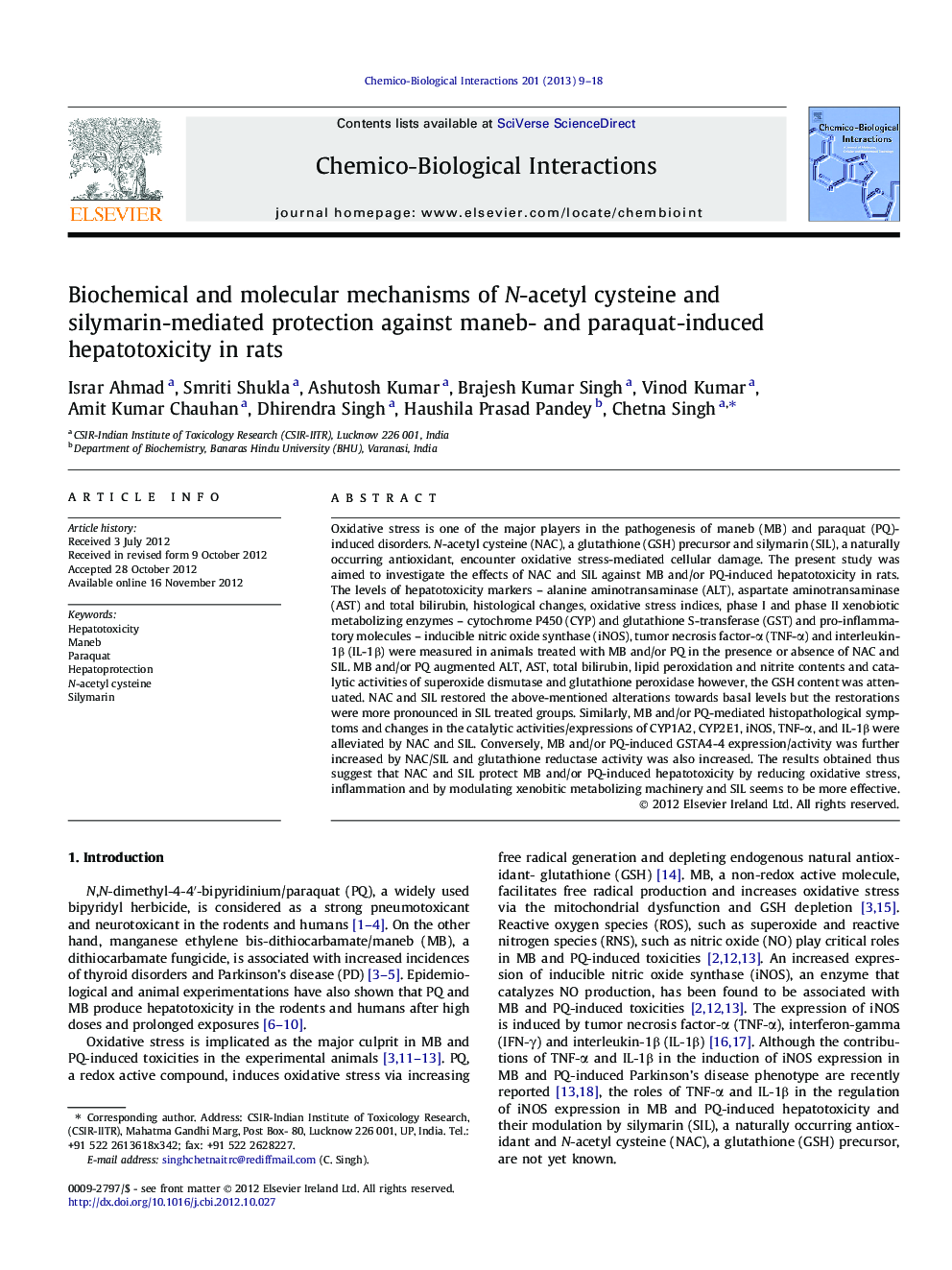| کد مقاله | کد نشریه | سال انتشار | مقاله انگلیسی | نسخه تمام متن |
|---|---|---|---|---|
| 2580835 | 1561636 | 2013 | 10 صفحه PDF | دانلود رایگان |

Oxidative stress is one of the major players in the pathogenesis of maneb (MB) and paraquat (PQ)-induced disorders. N-acetyl cysteine (NAC), a glutathione (GSH) precursor and silymarin (SIL), a naturally occurring antioxidant, encounter oxidative stress-mediated cellular damage. The present study was aimed to investigate the effects of NAC and SIL against MB and/or PQ-induced hepatotoxicity in rats. The levels of hepatotoxicity markers – alanine aminotransaminase (ALT), aspartate aminotransaminase (AST) and total bilirubin, histological changes, oxidative stress indices, phase I and phase II xenobiotic metabolizing enzymes – cytochrome P450 (CYP) and glutathione S-transferase (GST) and pro-inflammatory molecules – inducible nitric oxide synthase (iNOS), tumor necrosis factor-α (TNF-α) and interleukin-1β (IL-1β) were measured in animals treated with MB and/or PQ in the presence or absence of NAC and SIL. MB and/or PQ augmented ALT, AST, total bilirubin, lipid peroxidation and nitrite contents and catalytic activities of superoxide dismutase and glutathione peroxidase however, the GSH content was attenuated. NAC and SIL restored the above-mentioned alterations towards basal levels but the restorations were more pronounced in SIL treated groups. Similarly, MB and/or PQ-mediated histopathological symptoms and changes in the catalytic activities/expressions of CYP1A2, CYP2E1, iNOS, TNF-α, and IL-1β were alleviated by NAC and SIL. Conversely, MB and/or PQ-induced GSTA4-4 expression/activity was further increased by NAC/SIL and glutathione reductase activity was also increased. The results obtained thus suggest that NAC and SIL protect MB and/or PQ-induced hepatotoxicity by reducing oxidative stress, inflammation and by modulating xenobitic metabolizing machinery and SIL seems to be more effective.
► Oxidative stress plays an important role in pesticides-induced hepatotoxicity.
► Detoxifying enzymes regulate the chemically-induced hepatotoxicity.
► Pro-inflammatory molecules contribute to pesticides-induced hepatotoxicity.
► N-acetyl cysteine and silymarin protect against pesticides-induced hepatotoxicity.
► Silymarin is more efficacious than N-acetyl cysteine.
Journal: Chemico-Biological Interactions - Volume 201, Issues 1–3, 25 January 2013, Pages 9–18